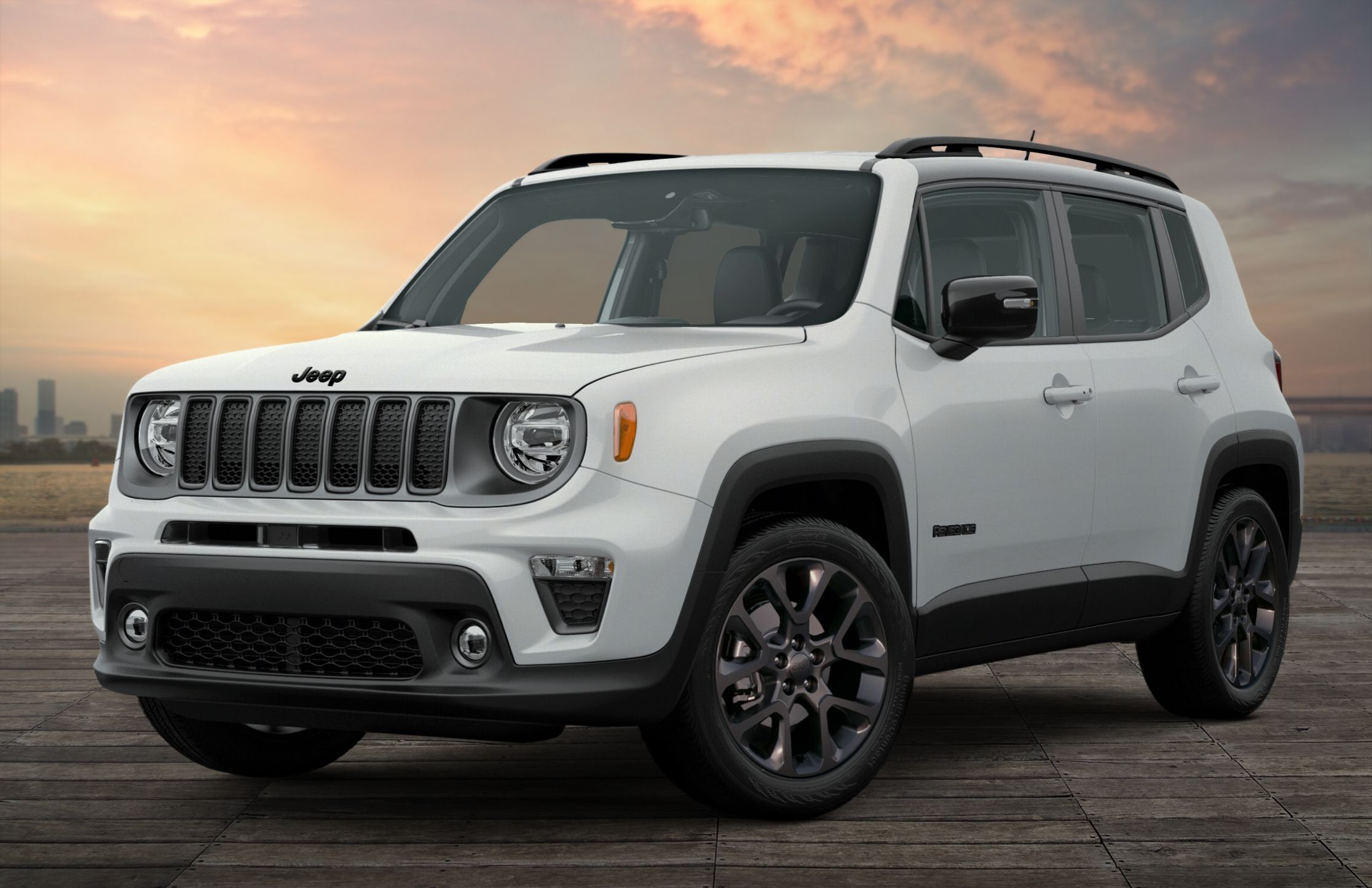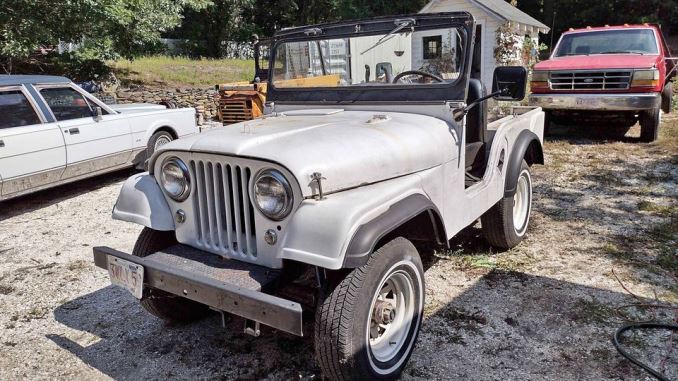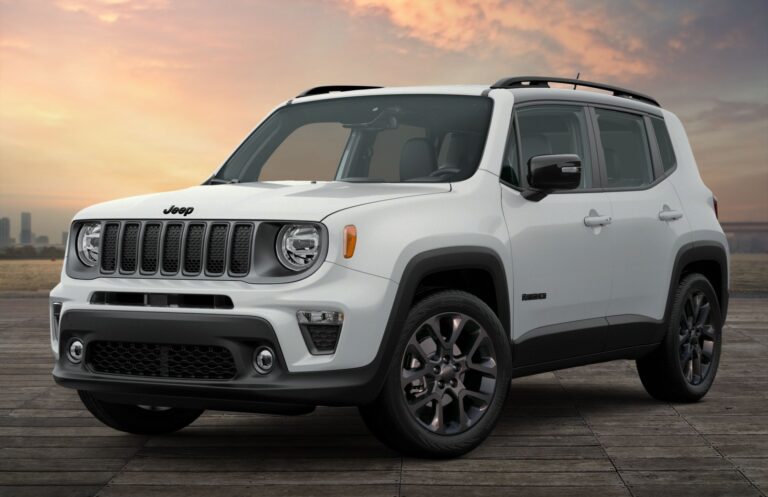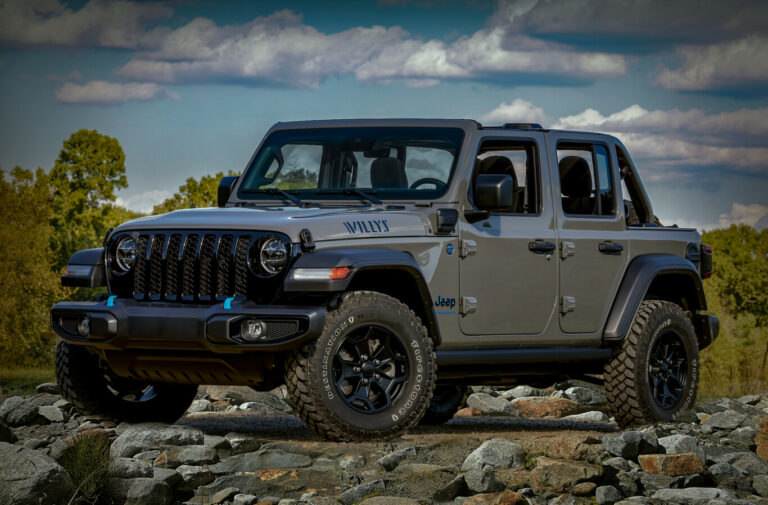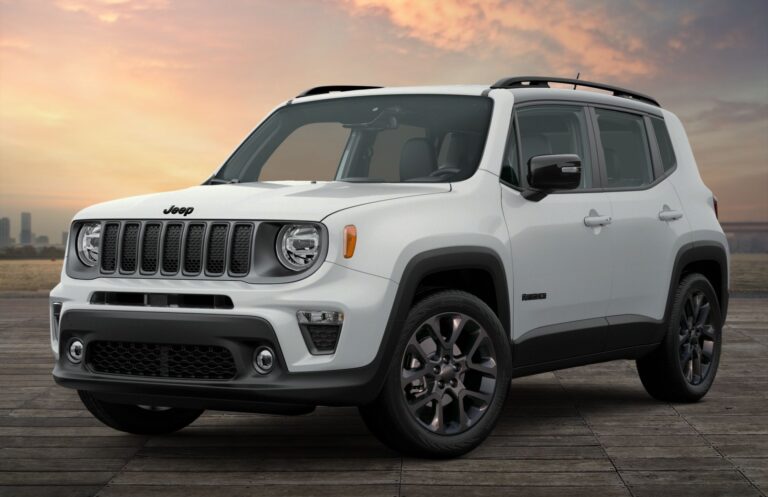Jeep Wagoneer Axle For Sale: A Comprehensive Guide for Enthusiasts and Builders
Jeep Wagoneer Axle For Sale: A Comprehensive Guide for Enthusiasts and Builders jeeps.truckstrend.com
The Jeep Wagoneer, a pioneer in the luxury SUV segment, has left an indelible mark on automotive history. While the original production run ended in the early 1990s, its legacy lives on, not just in the memories of classic car enthusiasts, but also in the robust and highly sought-after components it bequeathed. Among these, the axles stand out as a cornerstone for restoration projects, off-road upgrades, and custom vehicle builds. When the call for "Jeep Wagoneer Axle For Sale" echoes across the automotive world, it signifies a quest for durability, a specific width, and a reliable foundation for countless automotive dreams.
This comprehensive guide delves into everything you need to know about purchasing a Jeep Wagoneer axle, from understanding their various types and applications to navigating the marketplace and ensuring you make an informed decision.
Jeep Wagoneer Axle For Sale: A Comprehensive Guide for Enthusiasts and Builders
Why the Enduring Demand for Jeep Wagoneer Axles?
The continued popularity of Wagoneer axles isn’t just about nostalgia; it’s about their inherent strength, desirable dimensions, and compatibility with a wide range of modifications.
- Restoration Projects: For owners meticulously restoring a classic Grand Wagoneer or Cherokee (SJ), finding period-correct, functional axles is paramount to maintaining authenticity and drivability. Replacing a damaged or worn-out original axle is often a necessity.
- Off-Road Upgrades: Jeep Wagoneer axles, particularly the Dana 44 variants, are revered in the off-roading community for their robustness. They offer a significant strength upgrade over many stock axles found in smaller Jeeps (like CJs and YJs) and are a common choice for those looking to run larger tires and tackle tougher terrain. Their width is often ideal for achieving a stable stance without excessive overhang.
- Axle Swaps for Other Vehicles: Beyond Jeeps, Wagoneer axles are frequently swapped into various custom builds, hot rods, and other 4×4 vehicles. Their relatively common availability, manageable width (especially the "wide track" versions), and strong Dana 44 internals make them an attractive option for builders seeking a reliable and cost-effective foundation.
- Repair and Replacement: Accidents, extreme off-roading, or simply decades of wear and tear can necessitate the replacement of a Wagoneer axle. Finding a good used or rebuilt unit can be a more economical and practical solution than attempting extensive repairs on a severely damaged original.

Understanding the Types of Jeep Wagoneer Axles
Before you begin your search, it’s crucial to understand the different types of axles found under various Wagoneer models, as this will significantly impact compatibility and suitability for your project.
Front Axles
- Dana 27: Found in very early Wagoneers (pre-1971), these are less common for swaps due to their lighter duty nature and older closed-knuckle design.
- Dana 30: While primarily known for CJ and XJ Jeeps, some Wagoneers and J-trucks from the early 70s might have featured a Dana 30 front. Stronger than a Dana 27, but still considered light-duty for serious off-roading.
- Dana 44: This is the Holy Grail for most Wagoneer axle seekers. Found in most 1974-1991 Wagoneers and J-trucks, the Dana 44 is highly desirable.
- Closed Knuckle vs. Open Knuckle: Early Dana 44s (pre-1974 typically) were closed-knuckle, meaning the steering knuckles are enclosed within a large ball-like housing. Later models (1974-1991) are open-knuckle, which are generally preferred for easier maintenance, better steering angles, and easier disc brake conversions.
- Brakes: Both drum and disc brakes were used on Dana 44 front axles. Disc brakes are generally preferred for performance and ease of maintenance.


Rear Axles
- Dana 44: Like the front, the Dana 44 was a common rear axle, especially in earlier and higher-trim Wagoneers. It’s known for its strength. A key characteristic is its offset differential to the passenger side, which can be a consideration for driveshaft angles in certain swaps.
- AMC 20: Introduced in the mid-1970s and used in many later Wagoneers and Grand Wagoneers, the AMC 20 is recognizable by its large, flat differential cover. While generally strong enough for stock applications, its two-piece axle shaft design is a known weak point for serious off-roading. Many enthusiasts opt for one-piece axle shaft upgrades if using an AMC 20.
Key Distinctions and Considerations:
- Width (Narrow Track vs. Wide Track): This is a critical factor.
- Narrow Track: Generally found on 1963-1973 models, and some base models up to 1979. These axles are narrower, making them suitable for vehicles where a narrower stance is desired.
- Wide Track: Common on 1974-1991 Wagoneers and Grand Wagoneers, these axles are significantly wider (approximately 5-6 inches wider per side than narrow track). They provide a wider, more stable platform, ideal for larger tires and aggressive off-roading, and are often sought after for their ideal width in many custom builds.
- Bolt Pattern: Wagoneer axles typically share the common 6×5.5" bolt pattern, which is compatible with many GM, Toyota, and other vehicle wheels.
- Gear Ratios: Axles come with various gear ratios (e.g., 3.07, 3.31, 3.54, 3.73, 4.09). It’s crucial that front and rear axles have matching ratios for 4×4 operation.
- Brakes: Be aware of whether the axle has drum or disc brakes. Disc brakes are generally preferred and easier to maintain.
Where to Find Jeep Wagoneer Axles For Sale
The hunt for a good Wagoneer axle can be an adventure in itself. Here are the most common avenues:
- Online Marketplaces:
- eBay: A vast selection, but shipping costs for heavy items can be prohibitive. Detailed photos and seller ratings are key.
- Craigslist/Facebook Marketplace: Excellent for local finds, saving on shipping. Be prepared to travel and inspect in person. Join dedicated Wagoneer or Jeep parts groups on Facebook.
- Specialized Jeep/4×4 Salvage Yards: These yards often specialize in specific brands and can be a goldmine. They may even have units already pulled and inspected.
- Online Forums & Communities: Dedicated Jeep Wagoneer forums (e.g., IFSJA.org – International Full Size Jeep Association) often have "For Sale" sections where members buy, sell, and trade parts. This is a great way to tap into knowledgeable sellers.
- Used Parts Dealers: Some businesses specialize in sourcing and reselling used automotive components. They may offer a warranty or guarantee, providing more peace of mind.
- New Aftermarket Suppliers: While less common for complete used Wagoneer axles, some companies offer brand new, complete axle assemblies built to Wagoneer specifications, or provide all the components needed to rebuild or upgrade existing axles.
What to Look For When Buying a Jeep Wagoneer Axle
Buying a used axle requires careful inspection to avoid costly surprises down the road.
- Overall Condition:
- Rust: Surface rust is common and usually not an issue, but severe, pitting rust can compromise strength. Inspect around welds and mounting points.
- Bent Tubes/Housing: Look down the axle tubes from the differential. Any visible bend is a red flag. Check for signs of impact or collision.
- Fluid Leaks: Check around the differential cover, pinion seal, and axle seals. Minor leaks might just need new seals, but major leaks could indicate more serious internal issues.
- Knuckles/Spindles: Inspect the steering knuckles (front axle) for cracks or damage. Check spindle threads for wear.
- Mounting Brackets: Ensure all spring perches, shock mounts, and control arm mounts (if applicable) are intact and not bent or cracked.
- Completeness:
- Does it come with axle shafts, hubs, brakes (calipers, rotors/drums, backing plates), and the differential unit (carrier, gears)? A complete axle is usually more desirable.
- Gear Ratio:
- Crucial for 4×4 vehicles. Ask the seller for the ratio. If unknown, be prepared to open the differential to count teeth or have a shop confirm.
- Spline Count:
- Confirm the axle shaft spline count if you plan to use specific lockers or aftermarket shafts.
- Brake Type:
- Disc brakes are generally preferred. If it’s a drum brake axle, factor in the cost and effort of a disc conversion if that’s your goal.
- Open vs. Closed Knuckle (Front Axle):
- Open knuckle Dana 44s are generally more sought after for ease of maintenance and upgrade potential.
- Width (Narrow Track vs. Wide Track):
- Measure the axle flange-to-flange or wheel mounting surface (WMS) to WMS. Confirm it matches your project’s requirements.
- Price vs. Value:
- A cheap axle might need a full rebuild (bearings, seals, U-joints, brakes), which can quickly add up. Factor in these potential costs. A slightly more expensive, well-maintained or recently rebuilt unit might save you money in the long run.
Installation and Maintenance Considerations
Once you’ve acquired your Wagoneer axle, consider the following:
- Professional Installation vs. DIY: Axle swaps and gearing changes are complex. If you’re not experienced, professional installation is highly recommended to ensure safety and proper function.
- Gearing Setup: If you’re changing ratios or installing a new differential, proper gear setup is critical to prevent premature wear and noise. This requires specialized tools and expertise.
- Bearing and Seal Replacement: Even on a seemingly good used axle, it’s often wise to replace all bearings (wheel bearings, carrier bearings, pinion bearings) and seals as a preventative measure.
- Fluid Checks: Always drain and refill with fresh, appropriate differential fluid (often requiring a limited-slip additive if applicable).
- Brake System Overhaul: Plan to inspect, and likely replace, all brake components (pads, shoes, rotors, drums, calipers, wheel cylinders, lines) on a used axle.
Common Upgrades and Modifications
Wagoneer axles are a fantastic platform for enhancement:
- Locker Installation: Add a locking differential (e.g., ARB Air Locker, Detroit Locker, Yukon Grizzly) for maximum traction off-road.
- Disc Brake Conversions: Convert rear drum brakes to disc brakes for improved stopping power and easier maintenance. Many aftermarket kits exist.
- Chromoly Axle Shafts: Upgrade stock axle shafts to stronger chromoly units, especially if running larger tires or a locker.
- Reinforcement: For extreme off-roading, consider trussing the axle tubes or adding gussets to strengthen critical areas.
- Re-gearing: Change the internal gear ratio to match larger tire sizes, restoring power and improving drivability.
Estimated Price Table: Jeep Wagoneer Axle For Sale
Prices for Jeep Wagoneer axles vary significantly based on type, condition, location, and completeness. The following table provides estimated ranges and should be used as a general guide. Always verify specifics with the seller.
| Axle Type (Front/Rear) | Condition | Estimated Price Range (USD) | Notes |
|---|---|---|---|
| Front Dana 44 | Used – Good (Open Knuckle, Disc) | $400 – $800 | Desirable, complete with shafts, hubs, brakes. |
| Front Dana 44 | Used – Housing Only | $150 – $300 | Requires all internals, shafts, brakes. |
| Front Dana 44 | Rebuilt/Refurbished | $1,000 – $2,500 | Professionally rebuilt, new bearings, seals, possibly re-geared. |
| Rear Dana 44 | Used – Good (Offset, Drum) | $350 – $700 | Complete with shafts, hubs, drums. Offset diff. |
| Rear Dana 44 | Used – Housing Only | $100 – $250 | Requires all internals, shafts, brakes. |
| Rear AMC 20 | Used – Good (Drum) | $200 – $450 | Common, but often needs 1-piece axle shaft upgrade for heavy use. |
| Rear AMC 20 | Used – Housing Only | $75 – $150 | Requires all internals, shafts, brakes. |
| Front Dana 27/30 | Used – Good | $100 – $300 | Less common for swaps, lighter duty. |
| Complete Set (F/R Dana 44) | Used – Good (Matching Ratios) | $800 – $1,500 | Often a better deal than buying separately. Verify ratios match! |
| Aftermarket New Assembly | Brand New | $2,500 – $5,000+ | Custom-built, often with upgrades (e.g., lockers, specific ratios). |
Note: Shipping costs are extra and can be substantial for axles, often ranging from $200-$500+ depending on distance and carrier.
Frequently Asked Questions (FAQ)
Q: Are Jeep Wagoneer axles good for axle swaps into other vehicles?
A: Absolutely! Their strength, common Dana 44 components, and desirable widths (especially wide-track models) make them a popular choice for swapping into CJs, YJs, XJs, and even non-Jeep vehicles.
Q: What’s the difference between "narrow track" and "wide track" Wagoneer axles?
A: "Narrow track" axles (pre-1974, some later base models) are significantly narrower, roughly 54-56 inches WMS-to-WMS. "Wide track" axles (1974-1991) are wider, around 60-63 inches WMS-to-WMS. The wide track axles are generally more sought after for off-road stability and fitting larger tires.
Q: How can I identify my Wagoneer axle type and gear ratio?
A: Look for tags on the differential cover bolts or stamped numbers on the axle tubes. Dana axles often have "D44" or "D27/30" cast into the housing. For gear ratio, you might find a tag, or you’ll need to open the differential and count the teeth on the ring and pinion gears (e.g., 41 teeth on ring, 11 on pinion = 3.73 ratio).
Q: Should I buy a complete axle or just the housing?
A: For most users, a complete axle (with shafts, hubs, and differential) is preferable. Buying just the housing means you’ll need to source all the internal components, which can be more expensive and time-consuming unless you’re planning a very specific custom build.
Q: What are common gear ratios found in Wagoneer axles?
A: Common ratios include 3.07, 3.31, 3.54, 3.73, and 4.09. It’s critical that your front and rear axle ratios match precisely for 4×4 operation.
Q: Can I put disc brakes on my drum brake Wagoneer axle?
A: Yes, disc brake conversion kits are widely available for both front and rear Dana 44 Wagoneer axles. This is a popular upgrade for improved braking performance.
Conclusion
The phrase "Jeep Wagoneer Axle For Sale" represents more than just a transaction; it’s an opportunity to acquire a robust, versatile component that can breathe new life into a classic restoration, transform an ordinary 4×4 into an off-road beast, or lay the foundation for a truly unique custom build. By understanding the different types, knowing where to look, and performing a thorough inspection, you can confidently navigate the market.
Whether you’re a seasoned fabricator or a budding enthusiast, investing in the right Wagoneer axle is a critical step towards realizing your automotive vision. With careful planning and informed choices, these durable pieces of engineering history will continue to serve faithfully for many more miles and adventures to come.

